Supporting Children with Autism in Managing Repetitive Speech with ABA Therapy
August 1, 2025
Effective Strategies for Addressing Repetitive Speech in Autism

Understanding Repetitive Speech in Autism and the Role of ABA
Repetitive speech behaviors, such as echolalia or scripting, are common among children with autism and can serve various functions from self-regulation to communication. Addressing these behaviors requires an understanding of their underlying purposes and the application of evidence-based interventions. Applied Behavior Analysis (ABA) offers a scientifically supported approach for supporting children in managing these behaviors, with a focus on promoting functional communication and reducing maladaptive repetition.
What is ABA Therapy and How is it Used to Support Children with Autism?
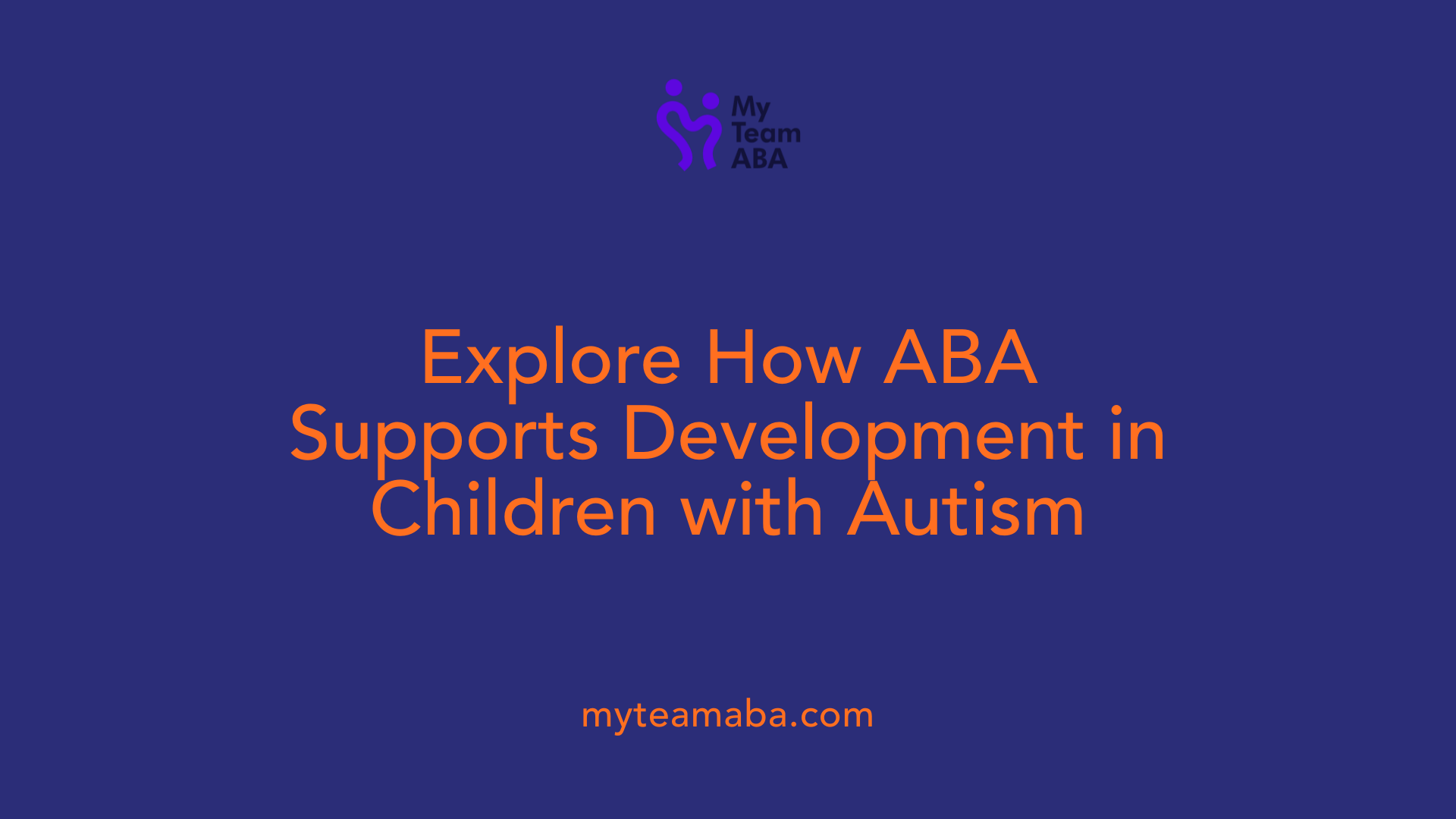
What is ABA therapy and how is it used to support children with autism?
Applied Behavior Analysis (ABA) is a science-based approach designed to help children with autism develop important skills and reduce behaviors that may interfere with daily life. It uses principles of learning and behavior, such as positive reinforcement, to shape desired actions and teach new skills.
ABA therapy focuses on increasing helpful behaviors like communication, social interaction, self-care, and academic skills. At the same time, it aims to decrease problematic behaviors through carefully planned interventions. Therapists observe each child's behaviors to understand their purpose—whether it’s gaining attention, sensory stimulation, or stress relief—and then create personalized strategies.
Therapists who oversee ABA programs are often qualified behavior analysts, such as Board-Certified Behavior Analysts (BCBAs). They design tailored treatment plans that align with each child's needs. These plans typically target areas including language, social skills, play, motor skills, and daily living activities.
ABA interventions can be delivered in various settings, such as at home, school, or community spaces. The therapy often involves ongoing assessment and data collection to monitor progress and make adjustments. Family members and caregivers play a vital role by supporting learning throughout the day, both during structured sessions and in natural environments.
Supported by over 20 scientific studies, ABA has shown to significantly improve intellectual functioning, language, daily life skills, and social behaviors in children with autism. Endorsed by reputable organizations like the US Surgeon General and the American Psychological Association, ABA remains an evidence-based best practice. Many insurance plans, including Medicaid, also cover ABA services.
In summary, ABA therapy is a systematic and adaptable approach aimed at helping children with autism thrive by building skills and reducing behaviors that hinder their independence and social participation.
How ABA Therapy Supports Speech Development in Children with Autism
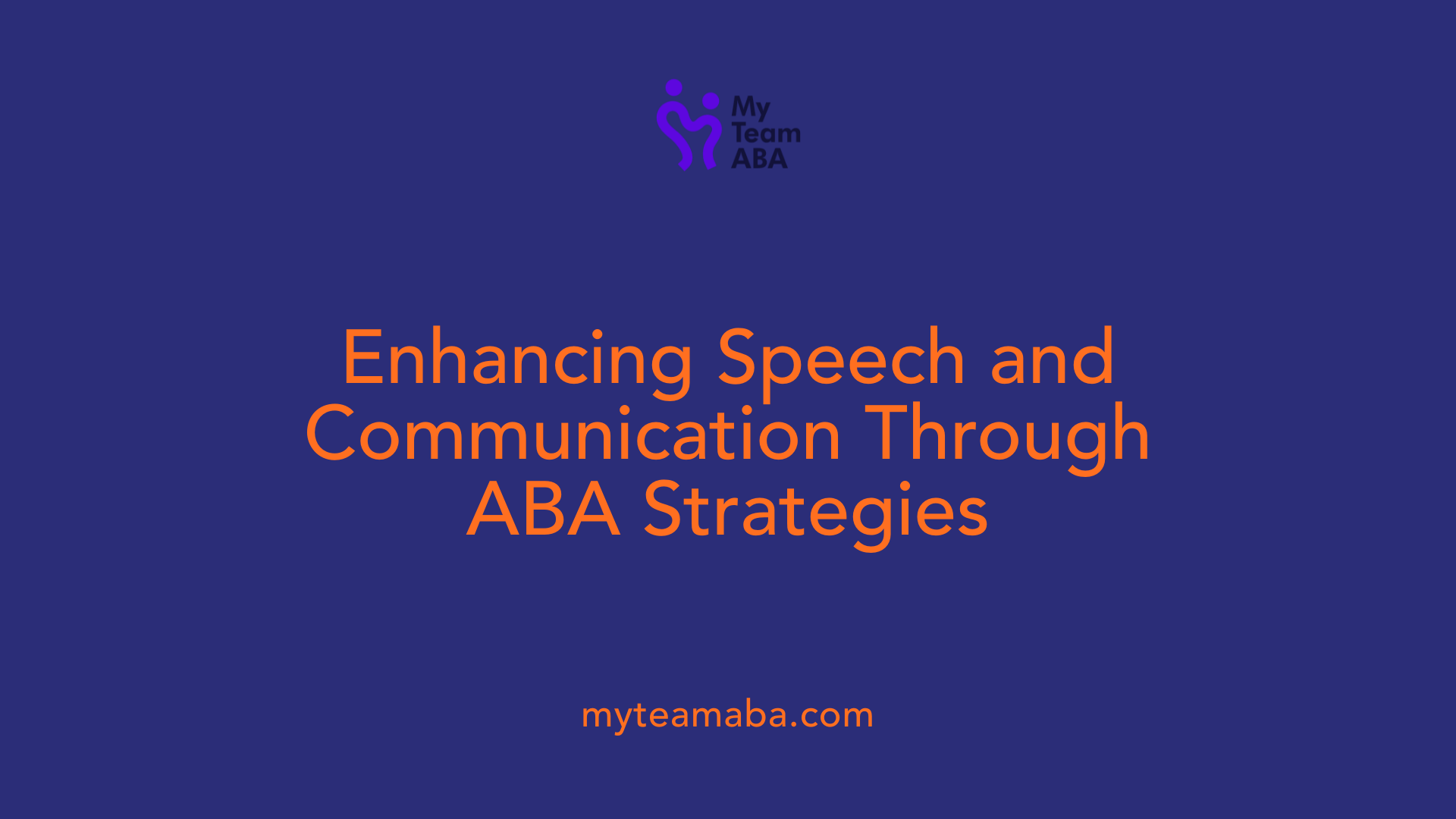
Can ABA therapy help with speech in children with autism?
Yes, ABA therapy can significantly aid in improving speech and communication skills in children with autism. It emphasizes reinforcing positive behaviors and teaching children how to use words and phrases effectively. Because ABA plans are tailored to each child's unique needs and abilities, the approach can lead to meaningful progress in language development.
ABA doesn't just focus on increasing speech; it also helps children better understand and use communication in everyday situations. This is achieved through a variety of techniques that support practical language use. Many children see improvements in their speech and overall communication, which enhances their ability to participate in social and educational activities.
Language and communication skill development
One of the primary goals of ABA therapy is to foster clear and functional communication. This involves teaching children to express their needs, desires, and feelings appropriately. As a result, children can better navigate social interactions and reduce frustrations that may arise from communication barriers.
Use of reinforcement strategies to promote speech
Reinforcement plays a vital role in ABA. When a child attempts to communicate or uses words correctly, they are rewarded with praise, tangible rewards, or other motivators. This positive reinforcement encourages continued use of speech and reinforces the child's desire to communicate.
Tailoring speech interventions in ABA
ABA programs are highly individualized. A behavior analyst assesses each child's current skills and sets specific, achievable goals. Speech development strategies are integrated into overall behavioral plans, ensuring that language goals complement other areas like social skills, self-care, and play.
Techniques like discrete trial training and natural environment teaching
Two common methods used within ABA for speech development are discrete trial training (DTT) and natural environment teaching (NET). DTT involves structured, repetitive practice of specific skills, such as vocabulary words or sentence formation, in a controlled setting.
In contrast, NET emphasizes teaching language in everyday situations, making it more functional and relevant. For example, a child may learn to request items during play or handle social exchanges with family members, promoting generalization of their skills.
Integration with traditional speech therapy
While ABA provides a behavioral approach to promoting communication, it often complements traditional speech therapy. Speech-language pathologists may work alongside ABA practitioners to address articulation, language comprehension, and expressive language more specifically.
This combined approach ensures that children receive comprehensive support, covering both the behavioral aspects of communication and speech mechanics. As a result, children are better equipped to develop meaningful speech skills that improve their overall quality of life.
Strategies to Reduce Repetitive Speech in Children with Autism through ABA
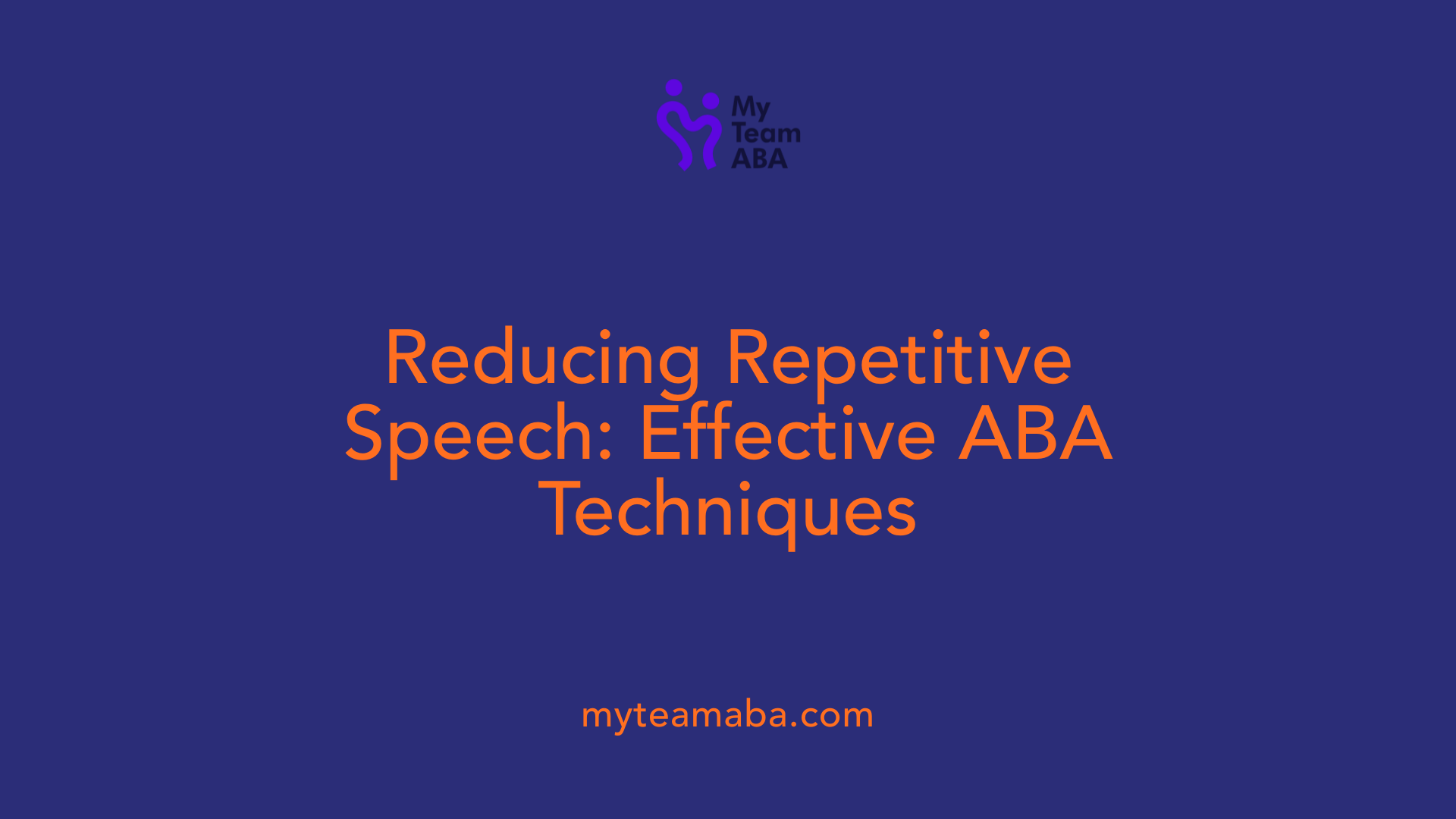
How can repetitive speech behaviors in children with autism be reduced?
Repetitive speech, including echolalia (repeating words or phrases), is common among children with autism. While such behaviors can serve functions like self-stimulation or emotional regulation, they may sometimes interfere with communication or learning.
One of the primary strategies for reducing repetitive speech is to teach functional communication skills. This involves helping children develop alternative ways to express their needs, desires, or feelings with more flexible, spontaneous language. Techniques such as the use of Picture Exchange Communication System (PECS), sign language, or speech-generating devices fall under augmentative and alternative communication (AAC) systems.
Applied Behavior Analysis (ABA) plays a crucial role in systematically fading scripted or repetitive speech. Behavior analysts design tailored programs that reinforce moments when children use appropriate, flexible language or non-verbal cues. Gradually, scripted phrases are replaced with spontaneous comments or requests, reducing reliance on rote repetition.
Understanding what triggers the repetitive speech is essential. Factors like sensory sensitivities, stress, or emotional needs often underpin these behaviors. Addressing these underlying issues can involve sensory-based interventions, such as providing calming sensory input or creating sensory-friendly environments.
Visual supports and social scripts are valuable tools. Visual schedules illustrate when and how to use scripts appropriately, while social stories or scripts help children learn the context in which certain language is suitable. These supports teach children to choose when to repeat phrases and when to use varied language.
Reinforcing periods when children communicate without scripting fosters flexibility. High-value rewards, such as preferred toys or activities, motivate children to engage in spontaneous speech. Visual timers can also help children understand and anticipate moments of transition, reducing anxiety that may trigger scripting.
Addressing sensory and emotional triggers—like overstimulation or frustration—is crucial. Providing calming spaces and employing stress-reduction strategies support the child's overall emotional regulation, which indirectly reduces compulsive scripting.
In summary, combining communication training, behavioral reinforcement, environmental adjustments, and emotional support creates an effective approach in decreasing repetitive speech behaviors. This comprehensive method allows children to communicate more adaptively, participate more fully in social interactions, and develop greater independence.
Evidence-Based Interventions for Managing Repetitive Behaviors in Autism with ABA
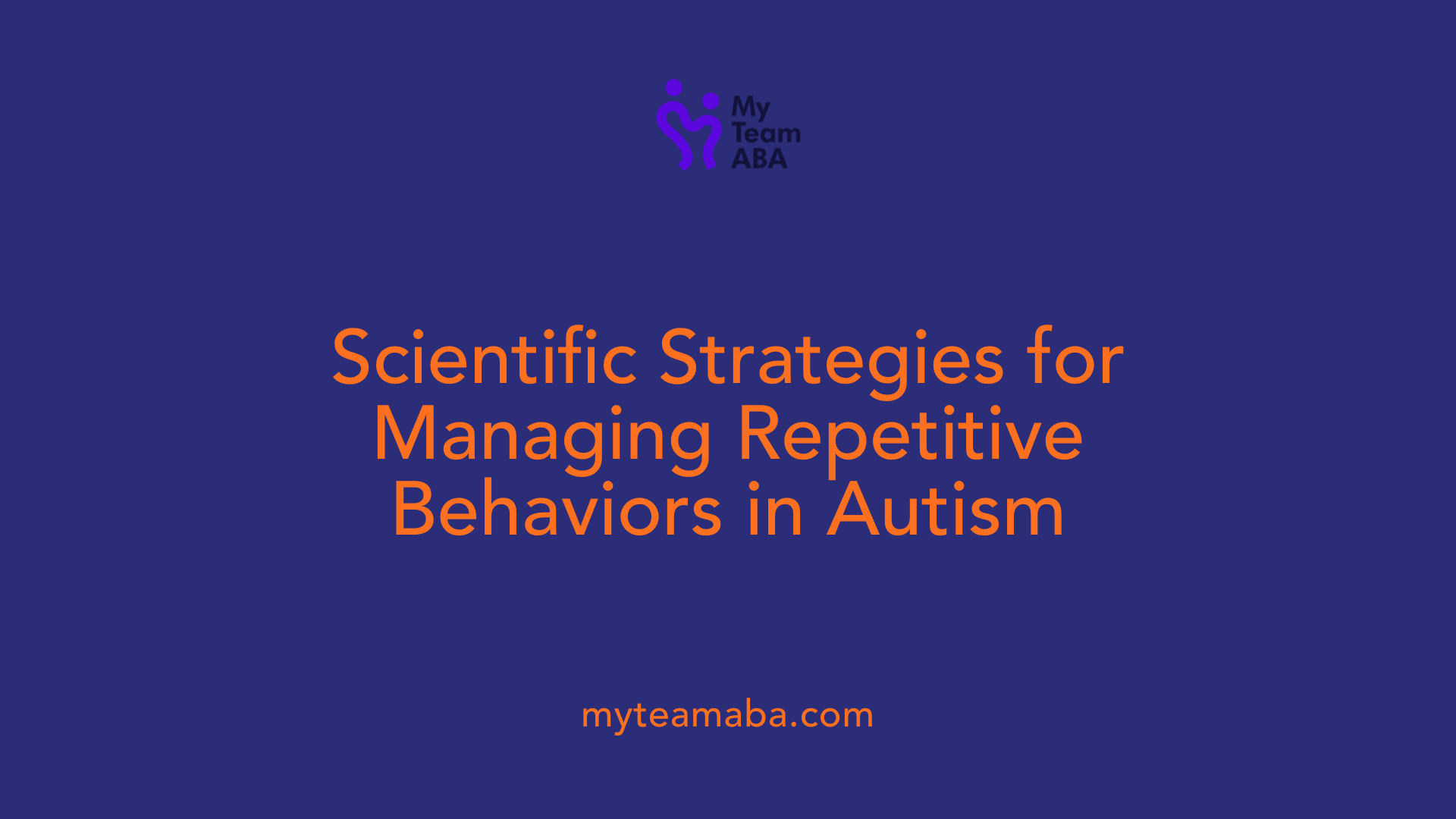
What are some evidence-based interventions for managing repetitive behaviors in autism using ABA?
Applying ABA methods to manage repetitive behaviors involves several effective strategies backed by research. One common approach is positive reinforcement, which rewards children for engaging in alternative, more adaptive behaviors. This encourages children to develop new routines that serve the same functions as their repetitive actions but are more socially acceptable or beneficial.
Differential reinforcement of variability (DRV) is another proven technique. It focuses on encouraging children to vary their responses, rewarding acceptable changes and reducing fixation on specific routines. For example, a child who repeatedly lines up toys may be rewarded for playing with toys in different ways or exploring new activities.
Functional behavior assessments (FBAs) play a critical role in tailoring interventions. These assessments help identify why specific behaviors occur—whether for sensory stimulation, escaping a situation, or gaining attention. With this knowledge, practitioners design targeted strategies such as modifying antecedent conditions or teaching functional communication skills.
In addition, visual supports like pictorial schedules and structured routines help reduce anxiety and provide clear expectations. These tools can gradually promote flexibility by guiding children through changes and new routines.
Addressing sensory and emotional needs is vital. Interventions may include sensory-based tools such as weighted blankets or sensory toys, offering calming options and helping children self-regulate. Support strategies also emphasize understanding the purpose of repetitive behaviors, integrating children’s interests into daily activities, and creating a supportive environment to foster adaptive behaviors.
Overall, combining these ABA-derived techniques—reinforcement, assessment, visual tools, and sensory strategies—creates a comprehensive plan to help manage and reduce repetitive behaviors, supporting children in developing more functional and fulfilling habits.
The Role of Caregivers and Family in Supporting ABA-Based Repetitive Speech Interventions
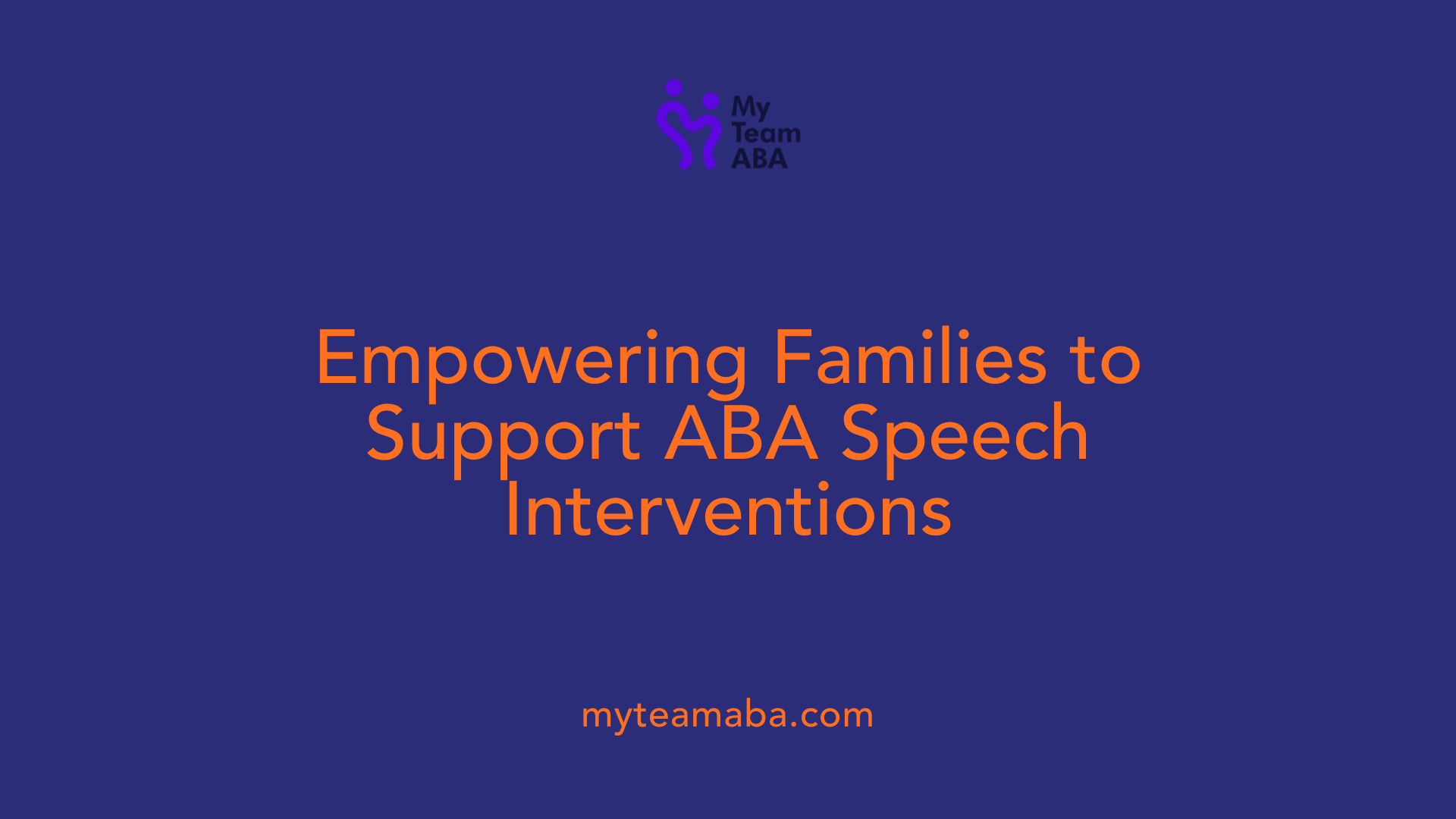
How can parents and caregivers support children in managing repetitive speech with ABA?
Parents and caregivers are vital partners in ABA therapy, especially when it comes to managing repetitive speech such as echolalia or fixed phrases. Their active involvement can significantly enhance the child's progress.
One of the most effective ways they can help is by participating in training sessions on positive reinforcement, functional communication training, and other behavioral techniques. This training enables caregivers to reinforce appropriate communication behaviors and discourage or redirect repetitive speech that may interfere with social interactions.
Using natural environment teaching—integrating intervention strategies into everyday routines—helps children learn and practice skills in real-life contexts. For example, during mealtime or play, caregivers can prompt and reinforce functional communication, encouraging the child to express their needs clearly.
Consistent reinforcement across home and school settings is crucial. When caregivers apply the same strategies used by therapists, children are better able to generalize their new skills. Establishing clear cues, visual supports, and reward systems at home mirrors the reinforcement methods used in therapy.
Involving the entire family in intervention planning ensures consistency and reinforces goals. Family members can track behaviors, identify triggers or functions of repetitive speech, and celebrate successes. They can also work with behavior analysts to adapt strategies that fit the child's evolving needs.
Supporting the generalization of skills from structured sessions to everyday life is essential. This involves encouraging children to use functional communication tools, such as picture cards or speech devices, in various environments. Patience and understanding from caregivers foster a supportive atmosphere that reduces stress and promotes engagement.
In summary, caregiver involvement through training, consistent application of ABA strategies, and family participation leads to more meaningful progress. By creating a predictable, encouraging environment, families empower children to develop flexible communication skills and reduce excessive or harmful repetitive speech, ultimately supporting their overall independence and social participation.
Incorporating Sensory and Environmental Strategies in ABA for Autism
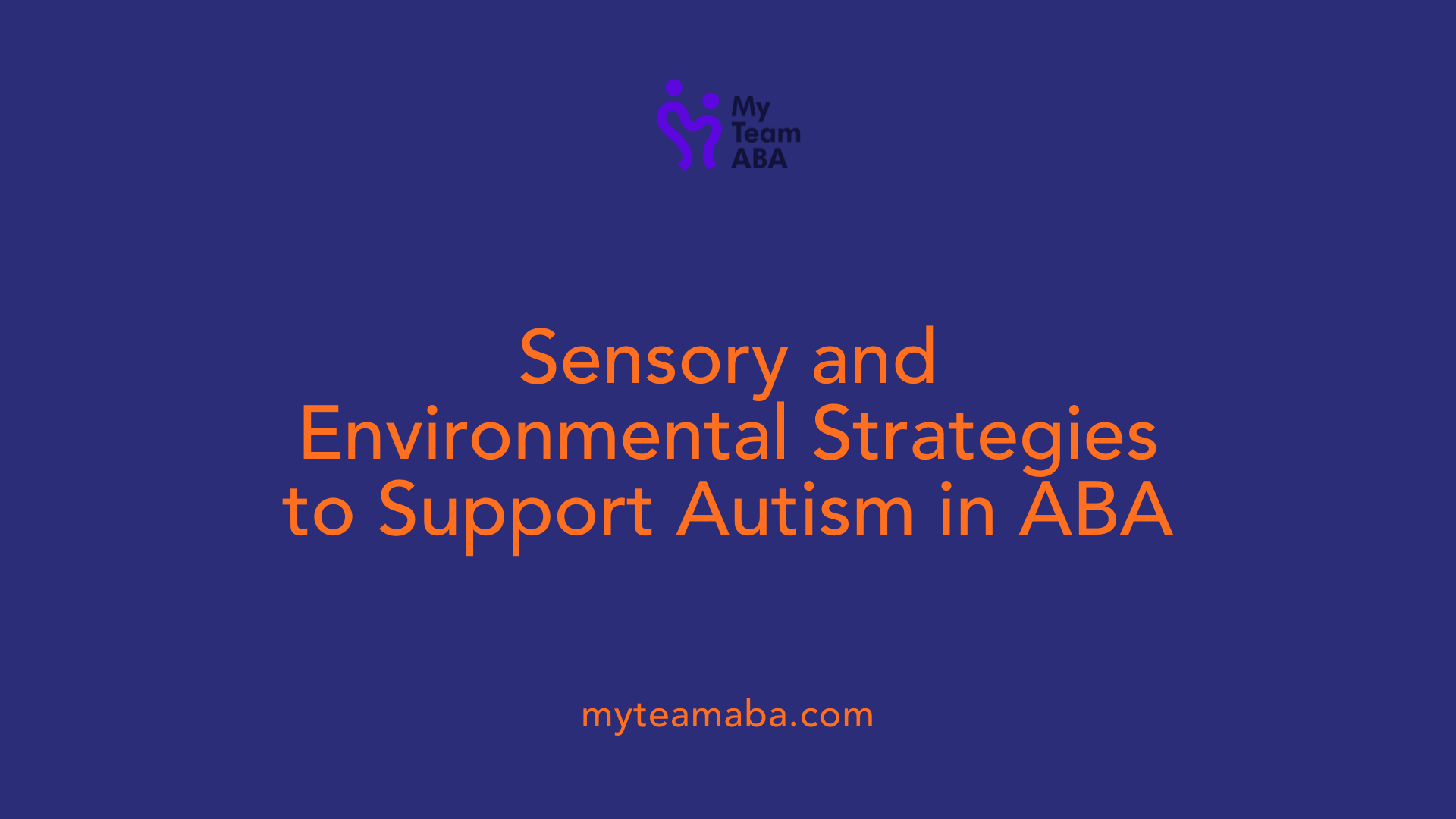
What are some sensory-based interventions in ABA for children with autism?
Sensory-based interventions play an essential role in ABA therapy by helping children with autism manage sensory processing differences. These strategies involve creating environments that are calming and tailored to each child's sensory needs. For example, sensory-friendly zones are designated areas where children can relax and self-soothe in a controlled setting. Tools like weighted blankets and sensory toys are frequently used to provide gentle, calming input that helps modulate sensory overload.
Environmental modifications are also crucial. Reducing sensory triggers such as loud noises, bright lights, or crowded spaces can significantly decrease stress and anxiety. This approach allows children to feel more secure and better able to focus on learning.
Supporting sensory regulation through these interventions helps address the core sensory needs that often underlie repetitive behaviors. By integrating sensory-friendly tools and modifications, ABA therapists aim to create a more comfortable environment. This approach not only enhances the effectiveness of behavioral strategies but also promotes overall well-being.
In essence, sensory interventions in ABA foster a supportive space that improves a child's ability to regulate their sensory experiences. This synergy between sensory and behavioral strategies encourages participation, reduces problematic behaviors, and facilitates learning and development in children with autism.
Conclusion: Promoting Functional, Respectful, and Adaptive Communication in Autism Support
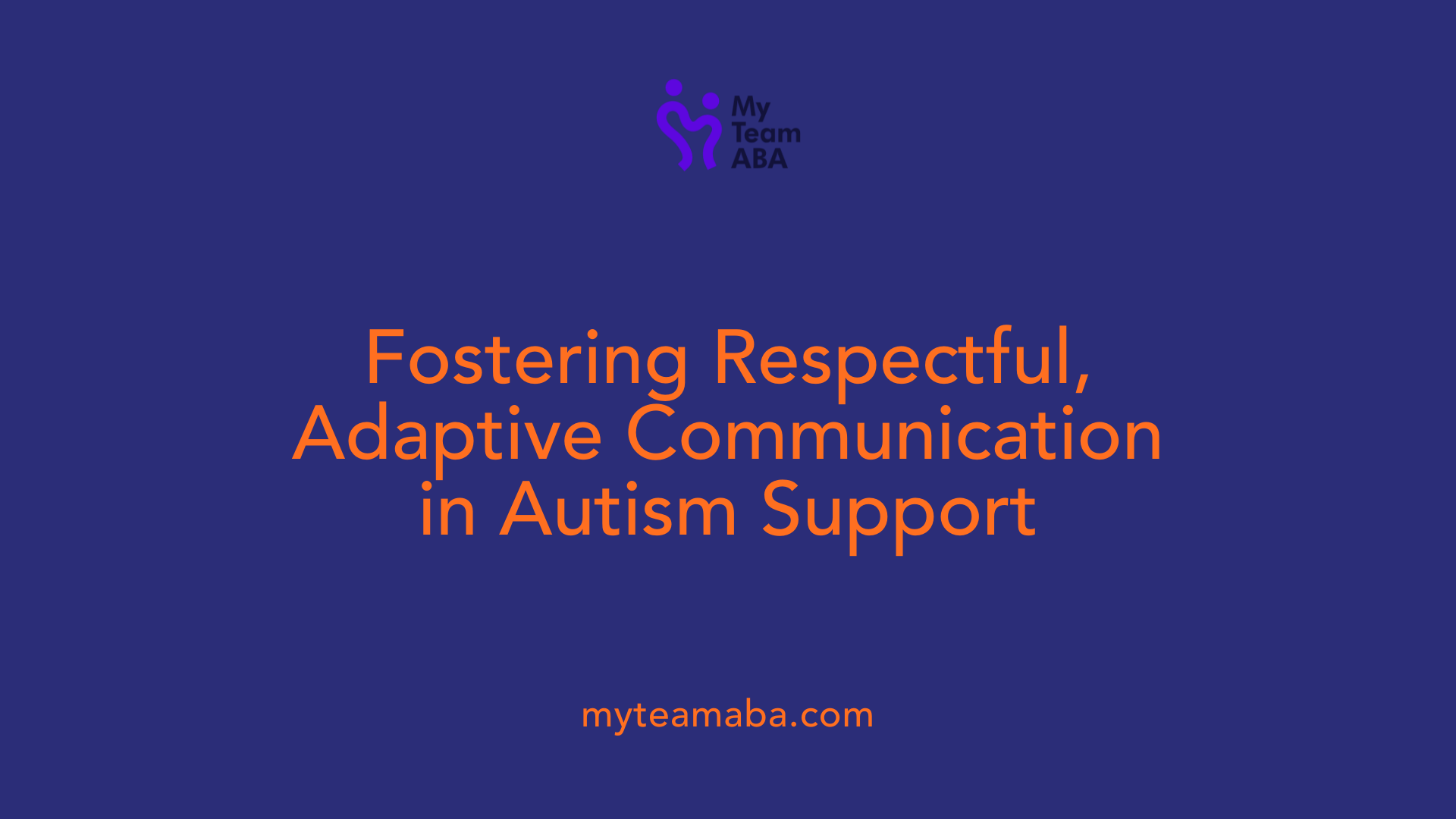
What are the goals of ABA in managing repetitive behaviors?
ABA aims to help children with autism develop useful and socially appropriate behaviors while reducing harmful or disruptive actions. When addressing repetitive behaviors, the goal is to understand their purpose—whether they serve sensory regulation, stress relief, or communication—and to modify them in ways that support the child's independence and safety.
ABA encourages replacing problematic behaviors with more adaptive alternatives through positive reinforcement. For example, teaching a child to express needs verbally instead of engaging in head-banging or hand-flapping can lead to safer, more constructive ways to manage sensory or emotional needs.
How do we balance behavior reduction with skill development?
It is essential to focus not just on decreasing repetitive behaviors but also on fostering new skills that meet the child's needs. ABA programs incorporate goal-oriented activities that enhance communication, social, self-care, and academic skills. Techniques such as Functional Communication Training (FCT) help children articulate their needs, reducing reliance on stereotyped actions.
The process involves ongoing assessment and data collection, which help practitioners adjust strategies to ensure progress. This balanced approach ensures that behaviors are managed in a way that promotes overall development and well-being, rather than simply suppressing behaviors.
How can respect for neurodiversity and individuality be maintained?
Many advocates emphasize that ABA should support rather than suppress core aspects of a child's neurodiversity. The goal is to aid children in participating fully in society with respect for their unique personalities and interests.
Practitioners strive to build on each child's strengths and preferences, integrating their interests into learning routines. This person-centered approach helps children feel valued and motivated while learning essential life skills.
What are collaborative and individualized strategies?
A successful ABA program involves collaboration with families, caregivers, and the children themselves. Treatment plans are personalized, considering the child's specific needs, behaviors, and family dynamics.
Strategies include providing sensory-friendly zones, using visual schedules, and incorporating special interests into daily routines to reduce anxiety and promote engagement. When harmful behaviors are involved, professional guidance from behavior analysts ensures that interventions are safe and respectful.
Addressing repetitive behaviors in autism is most effective when approached with understanding, patience, and a focus on empowering the child. This respectful, individualized approach fosters greater autonomy and improves overall quality of life, helping children navigate their environments with confidence and less stress.
Supporting Children with Autism in Managing Repetitive Speech through ABA
Addressing repetitive speech behaviors in children with autism is a multifaceted challenge that requires evidence-based, individualized approaches. ABA therapy stands out as a scientifically supported method that not only aims to reduce problematic repetition but also prioritizes the development of functional, flexible communication skills. Through tailored interventions like functional communication training, positive reinforcement, sensory regulation strategies, and active caregiver involvement, children can learn to express themselves more effectively and participate more fully in their communities. Respecting each child's unique neurodiversity, ABA programs seek to empower children, promote their well-being, and support their journey toward greater independence. With ongoing assessment and collaborative efforts among therapists, families, and educators, children with autism can overcome barriers of repetitive speech and build meaningful, adaptive communication that enriches their lives.
References
- Applied Behavior Analysis (ABA) | Autism Speaks
- Early Intervention Strategies for Managing Repetitive Behaviors in ...
- The Controversy Around ABA - Child Mind Institute
- Understanding Repetitive Behavior in Children With Autism
- Autism and Restricted & Repetitive Behaviors - Apollo Behavior
- Applied Behavior Analysis (ABA) | Autism Speaks
- Applied Behavioral Analysis (ABA) - Autism Speaks
- ABA and other therapies | Autism Speaks
- Can ABA help a teen on the mildly affected end of the autism ...
- Expert Q&A: How ABA therapy can help with severe behaviors
